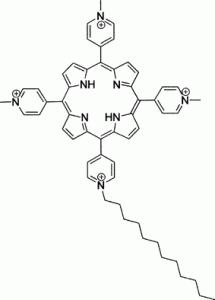 The effects a new photoactivatable cationic prophyrin on components of freshwater ecosystems polluted by pathogenic agents responsible for malaria is investigated in a recent article from teams based at the University of Padova and the university of Camerino in Italy and Institut de Recherche en Science de la Santé in Burkina Faso. This paper is part of a research project which is aimed at the prevention of water- and vector-borne diseases such as Anopheles and Aedes larvae through adequate control of porphyrin-photosensitised processes. These larvae are responsible for the worldwide diffusion of serious diseases, such as malaria and Dengue fever.
The effects a new photoactivatable cationic prophyrin on components of freshwater ecosystems polluted by pathogenic agents responsible for malaria is investigated in a recent article from teams based at the University of Padova and the university of Camerino in Italy and Institut de Recherche en Science de la Santé in Burkina Faso. This paper is part of a research project which is aimed at the prevention of water- and vector-borne diseases such as Anopheles and Aedes larvae through adequate control of porphyrin-photosensitised processes. These larvae are responsible for the worldwide diffusion of serious diseases, such as malaria and Dengue fever.
Porphyrins are characterized by a macrocyclic molecule which absorbs visible light and transfers some of this absorbed energy to molecular oxygen forming reactive oxygen species (ROS). Porphyrins and visible light are, individually, devoid of any bio-toxicity but when ROS are formed in a cell they are cytotoxic and cause irreversible cell death. Their toxicity is the result of a multi-target mechanism involving parallel damage of a large number of cell constituents thus allowing very little opportunity for the selection of photoresistant microbial strains or the onset of mutagenic processes. These photo processes show a high selectivity in space and time and are especially suitable to address problems connected with environmental pollution caused by the presence of large populations of potentially pathogenic microorganisms.
In collaboration with the company Frontier Scientific (Logan, Utah) the team from Italy and Burkina Faso have developed a specific porphyrin, named AquaFrin. Studies by the teams in Italy demonstrated that AquaFrin, once mixed with standard larval food, is rapidly ingested by Anopheles and Aedes larvae and localises in their alimentary canal. This makes the larvae photosensitive and the exposure of the porphyrin-loaded larvae to low intensity visible light induces an efficient death. The successful extension of the technique to breeding sites of Anopheles larvae under natural conditions depends on the fulfilment of specific requirements:
- Palatability of the porphyrin by the larvae when the photosensitising agent is introduced into their natural habitats was achieved by association of AquaFrin with selected carriers: both pollen and croquettes from cat food were successfully loaded and favourably competed with the natural larval food.
- Prolonged Floatability of the carrier-porphyrin system in an aqueous milieu is essential since larvae preferentially feed at the water surface: this was achieved due to the presence of sufficiently large amounts of the highly hydrophilic AquaFrin.
- Selectivity of the porphyrin photosensitising action toward larvae to minimize the risk of generalized damage to non-target constituents of the larval ecosystem. Toward this aim, the size of the added porphyrin carrier particles is similar to the diameter of the esophagus of Anopheles larvae which facilitates their rapid ingestion, while the complex displays a long-term stability in water which avoids release of AquaFrin to the surrounding environment.
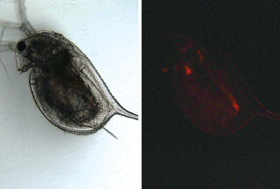 It is this final issue that the recently published PPS article concerns. The article investigates the effects of the porphyrin on ciliated protozoa and branchiopod crustaceans which are components of the freshwater ecosystems that Anopheles larvae pollute. These organisms are sensitive to the porphyrin but killing doses are an order of magnitude larger than those which are phototoxic to larvae.
It is this final issue that the recently published PPS article concerns. The article investigates the effects of the porphyrin on ciliated protozoa and branchiopod crustaceans which are components of the freshwater ecosystems that Anopheles larvae pollute. These organisms are sensitive to the porphyrin but killing doses are an order of magnitude larger than those which are phototoxic to larvae.
Field studies have been performed in Burkina Faso and have given very positive results. Pollen – or cat food-bound AquaFrin were added to endemic breeding sites of Anopeles larvae and when illuminated by daylight an extensive mortality was observed to occur within a few hours.
At present, the investigations are being extended to a number of areas in sub – Saharan countries, in order to validate and possibly refine the larvicidal protocol tailoring it to situations characterized by different species of Anopheles larvae, as well as different physical and chemical or optical quality of water, climatic conditions, biological composition of the ecosystem.
Interested in knowing more? Read the full article for free until December 7th.
Effects of a new photoactivatable cationic porphyrin on ciliated protozoa and branchiopod crustaceans, potential components of freshwater ecosystems polluted by pathogenic agents and their vectors
Clara Fabris, Marina Soncin, Giulio Jori, Annette Habluetzel, Leonardo Lucantoni, Simon Sawadogo, Laura Guidolin and Olimpia Coppellotti
Photochem. Photobiol. Sci., 2012, DOI: 10.1039/C1PP05154G
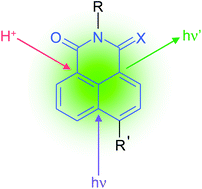











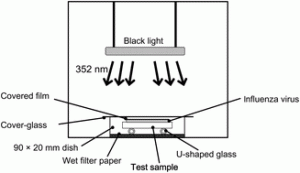



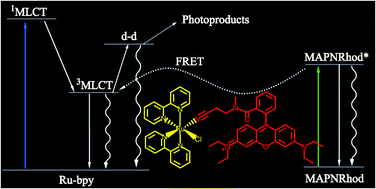 In a recently published PPS article a team from Argentina demonstrate a way to enable a photodissociation reaction at longer wavelengths by utilising a modified rhodamine B (Rhod) cooridinated to a bis-bipyridine ruthenium (II) (Ru-bpy) phototrigger complex which has enhanced absorption of green light.
In a recently published PPS article a team from Argentina demonstrate a way to enable a photodissociation reaction at longer wavelengths by utilising a modified rhodamine B (Rhod) cooridinated to a bis-bipyridine ruthenium (II) (Ru-bpy) phototrigger complex which has enhanced absorption of green light. 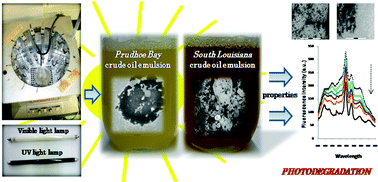 What if you could disperse oil spills in the sea, such as the BP spill in the Gulf of Mexico, with air, sunlight, and an environmentally friendly botanical product? These are the ingredients used in a recently published article from Professor Steven Suib and his team from the University of Conneticut, USA. The study found that by adding a plant-based surfactant to a sample of synthetic seawater mixed with crude oil, pumping in air, stirring the sample and exposing it to ultraviolet light, the oil/water mixture quickly broke down into small particles.
What if you could disperse oil spills in the sea, such as the BP spill in the Gulf of Mexico, with air, sunlight, and an environmentally friendly botanical product? These are the ingredients used in a recently published article from Professor Steven Suib and his team from the University of Conneticut, USA. The study found that by adding a plant-based surfactant to a sample of synthetic seawater mixed with crude oil, pumping in air, stirring the sample and exposing it to ultraviolet light, the oil/water mixture quickly broke down into small particles.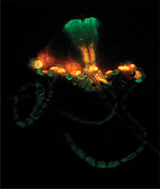 A team from Austin, Texas have reported two new proteins displaying primary structures never before encountered in natural FPs in a recently published PPS article. The proteins consist of multiple GFP-like domains repeated within the same polypeptide chain. A two-domain green FP (abeGFP) and a four-domain orange-fluorescent FP (Ember) were isolated from the siphonophore Abylopsis eschscholtzii and an unidentified juvenile jellyfish (order Anthoathecata), respectively.
A team from Austin, Texas have reported two new proteins displaying primary structures never before encountered in natural FPs in a recently published PPS article. The proteins consist of multiple GFP-like domains repeated within the same polypeptide chain. A two-domain green FP (abeGFP) and a four-domain orange-fluorescent FP (Ember) were isolated from the siphonophore Abylopsis eschscholtzii and an unidentified juvenile jellyfish (order Anthoathecata), respectively. 

